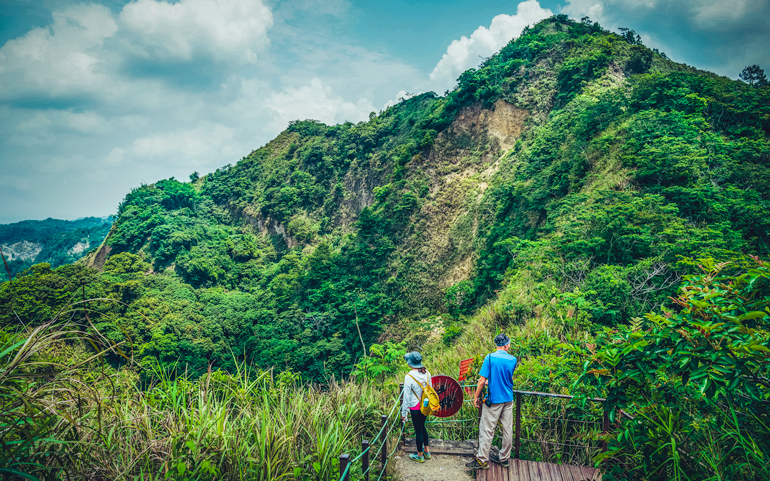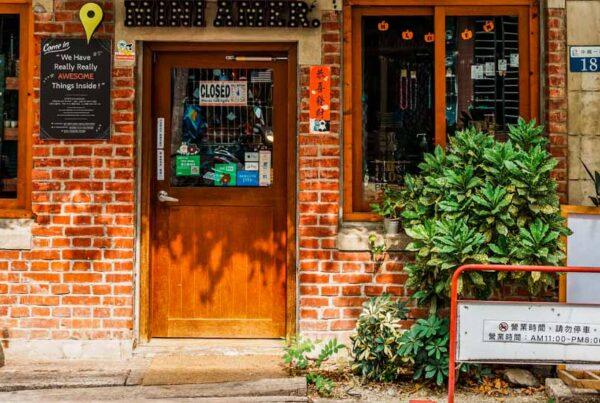A Drive to the Heart of Taiwan
TEXT / STEVEN CROOK
PHOTOS / RAY CHANG
Nantou County in central Taiwan is home to no coastline, but it has some of the island’s most magnificent scenery. Two routes into this mountainous county’s heart are Freeway 6 and Highway 14, taking you from Taichung City to the town of Puli.
A clear blue sky greeted our bullet train as it entered the central Taiwan city of Taichung and pulled into its high-speed rail station. Eager to begin exploring, we headed downstairs to pick up a rental car and drive into Nantou County via National Freeway 6.
In contrast with Taiwan’s western lowlands, landlocked Nantou is both thinly populated and ruggedly mountainous. It’s possible to trek through the spectacular Central Mountain Range, a section of which covers the better half of the county, for several days without encountering a road. The region also has dozens of shorter hiking routes suitable for those with less ambition or less time, and we made a beeline for one of these.
Jiu-Jiu Peaks
The Jiu-Jiu Peaks Ecology and Art Park (“Jiu-Jiu” is the Mandarin pronunciation of “99”), located in Caotun Township north of both Freeway 6 and Provincial Highway 14, is part of a nature reserve that was established in the wake of the devastating 921 Earthquake in September of 1999. Because of the area’s fragile geology, the quake created what is – in verdant Taiwan – an unusually desolate landscape.
Steep slopes shed loose soil and rocks, leaving them bereft of vegetation. Aerial photos taken after the disaster revealed a cluster of sharp, bald ridges. In the almost 20 years since, the hillsides have stabilized and the peaks are again covered with greenery. Vegetation has reconquered the badlands, transforming them into scenery that reminded me a little of Guilin in mainland China.
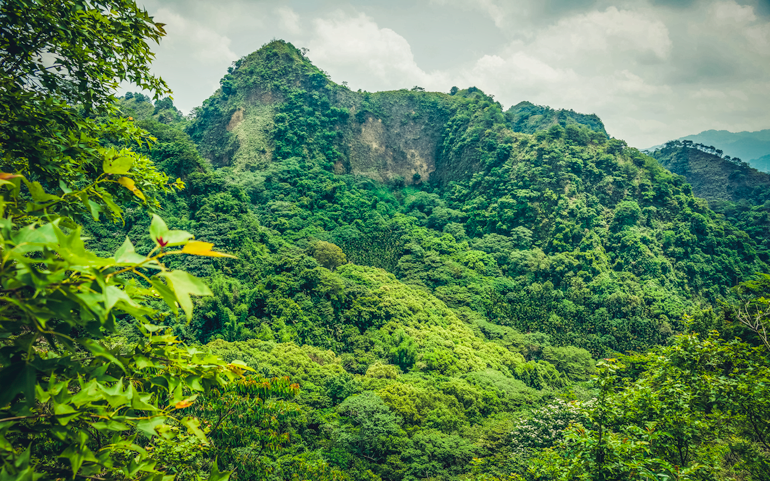
For fans of fresh air and exercise, the park’s main attraction is the 99 Peaks Forest Trail. This 1.93km-long circuit takes hikers up and over a few of the 99 peaks the area is said to have, the highest point being 485m above sea level. According to on-site information boards, a round-trip takes about one hour. However, it’s best to allow at least two hours for the hike so that you can fully enjoy both the walk and the views over the park area and Caotun, the nearest town, to the west.
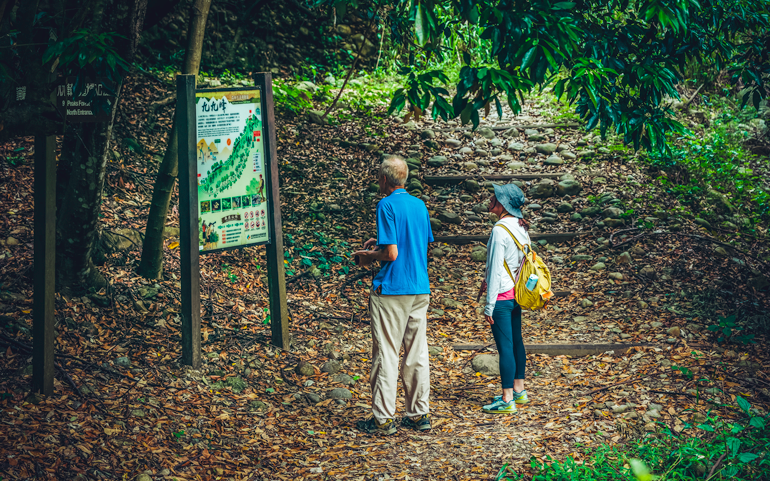
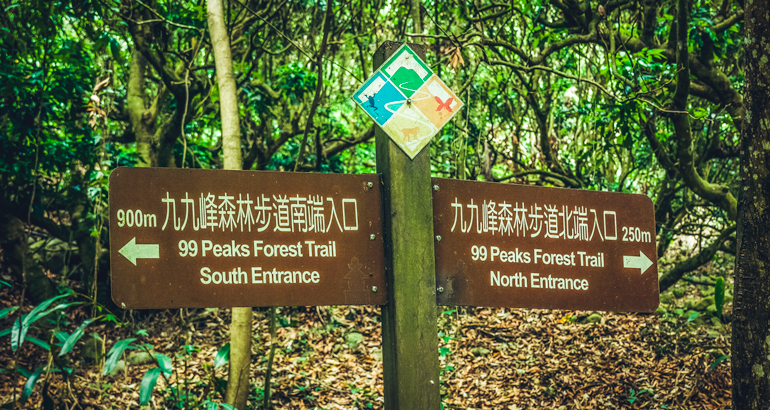
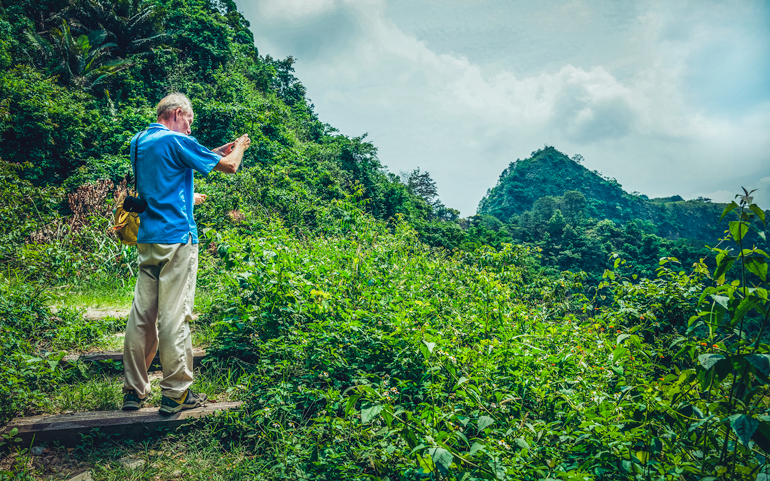
Some stretches of the trail are paved. Others consist of compacted soil held in place by stones and timber blocks. Where the going gets steep, steps have been carved into the hillside, or wooden stairs built a few inches above the ground to protect the surface from erosion.
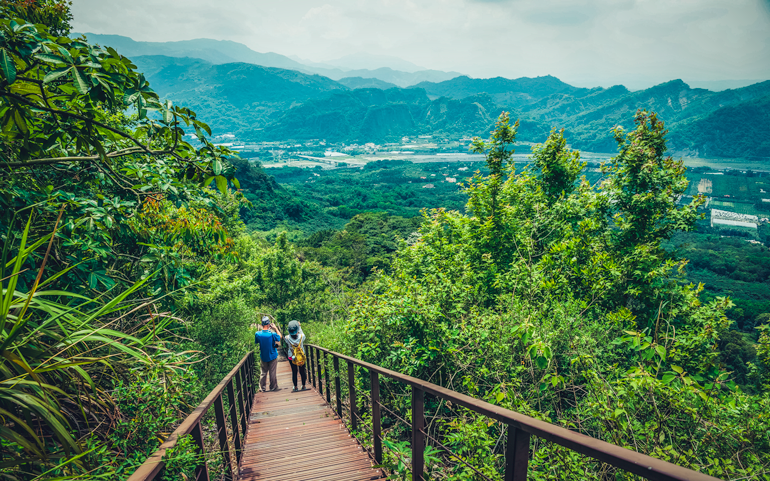
Along the way, we saw a stunning array of butterflies and moths, many a grasshopper, and a few whopping Golden Orb Weaver spiders. In Chinese, these creatures are called “man-faced spiders” – but few people are brave enough to get so close they can see the dark dots on the spider’s yellow back, which resemble eyes, or the semi-circular “mouth” just below the “eyes.”
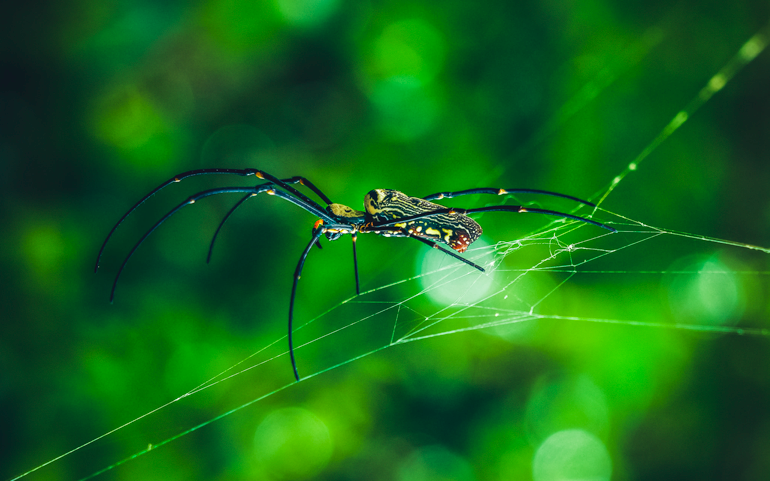
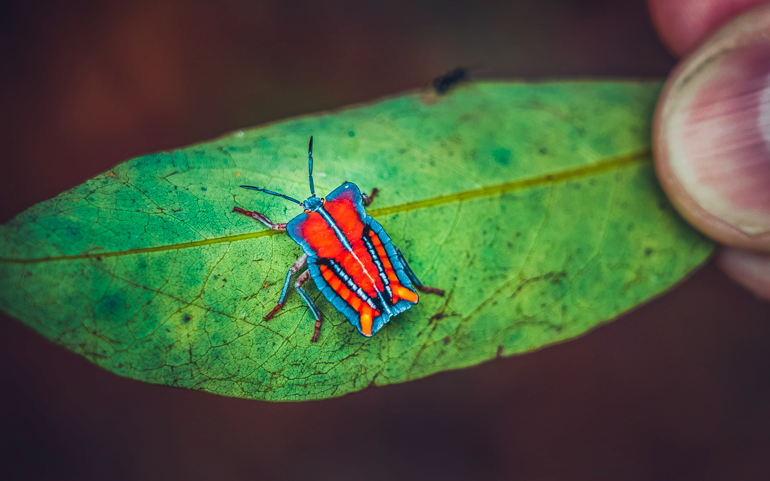
If you’re extremely lucky you may glimpse larger creatures, such as the Taiwan ferret badger or the Taiwan serow (a goat-like bovid). The former is seldom seen during daytime, while the latter often uses its incredible climbing skills to get away from humans.
The foliage was equally diverse. I wasn’t surprised to come across various types of bamboo, but never before had I seen so many Malabar Chestnut trees in one place. These are cultivated not for their nuts, which are inedible, but for sale as ornamental houseplants. When the trunks of five trees are successfully braided together as they grow, the result is seen as a symbol of wealth. In fact, an alternative name in Chinese is the “Get Rich Tree.” At the time of our visit, the trees were shedding their large shaving-brush-shaped flowers.
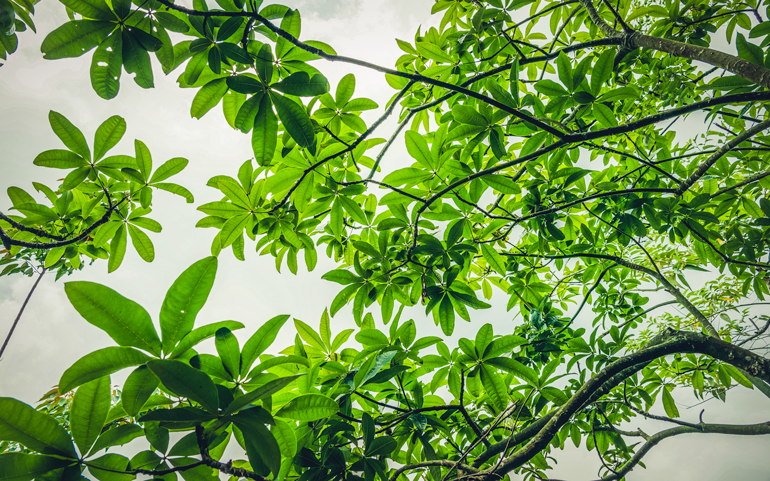

After working up a good sweat on the trail, you can cool off while appreciating some art. The Yu-Hsiu Museum of Art, a short stroll from the parking lot near the trailhead, is in a building of strikingly modern design for which the architect won a national prize. For details on current and upcoming exhibitions, visit the museum’s website.
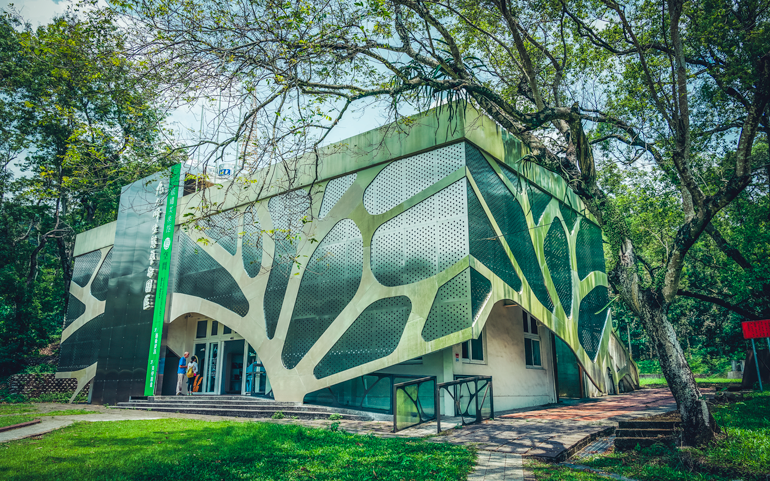
Yu-Hsiu Museum of Art
(毓繡美術館)
Add: No. 26, Ln. 150, Jianxing Rd., Pinglin Borough, Caotun Township, Nantou County
(南投縣草屯鎮平林里健行路150巷26號)
Tel: (049) 257-2999
Website: www.yu-hsiu.org
As the crow flies, our next destination was less than 2km away along Highway 14. After parking our car beneath Freeway 6, we walked a few minutes to the northern end of the Shuangxi Suspension Bridge, immediately on arrival disturbing a pair of Formosan macaques, Taiwan’s only monkey species.
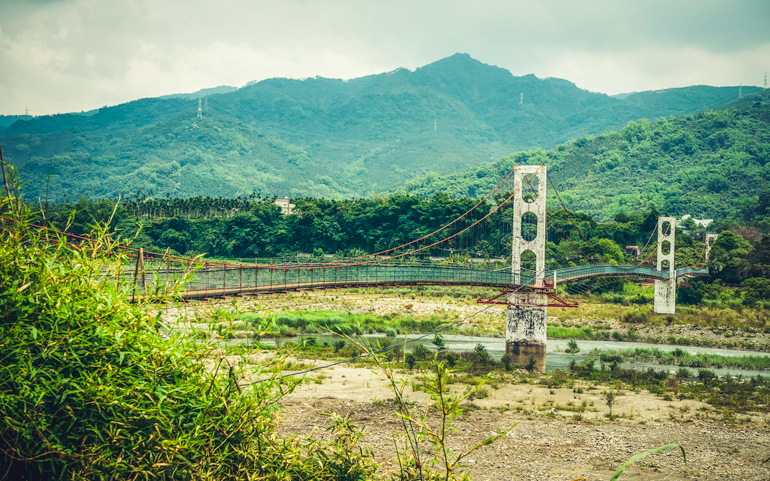
Spanning the Dadu River (also known as the Wu River), the bridge is the longest (360m) of its type in Taiwan. It was completed under the supervision of Lin Zhi-mu (1930-2003), a construction specialist who oversaw the building of more than half of Taiwan’s 300-odd steel-cable footbridges. A relief image by the northern end of the bridge depicts Lin at work.
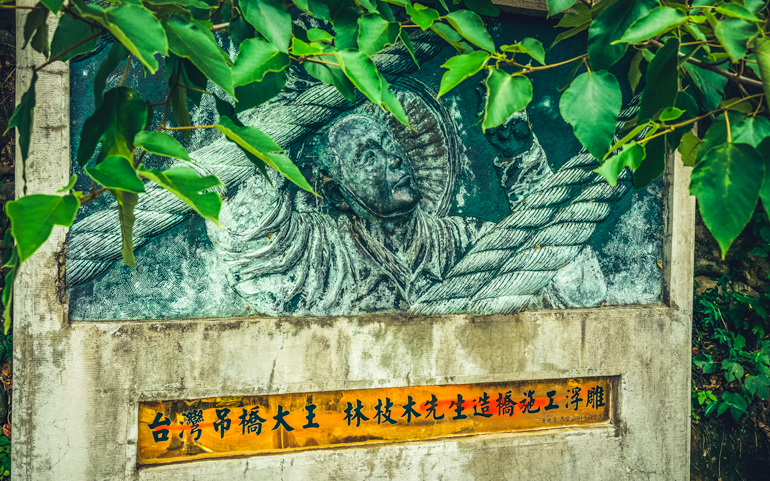
At the southern end, you’ll find an M24 tank that was built in the US during World War II, and which later served in Taiwan’s army.
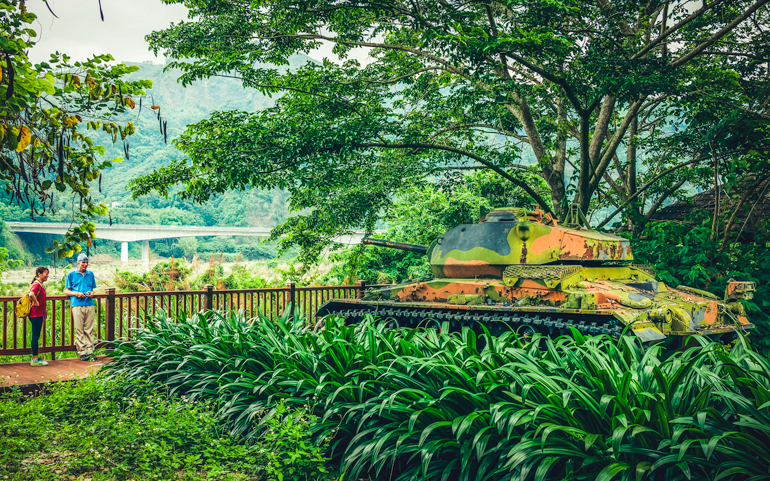
Local Crafts
From the bridge, it’s barely 10km west along Highway 14 to the National Taiwan Craft Research and Development Institute, located just outside the center of Caotun town. The mission of the NTCRI is to improve the quality of products made by traditional-handicraft artisans so as to make them more marketable. It’s an excellent place to see craftspeople at work, and you can buy quality keepsakes, among them practical items such as chopsticks and backscratchers.
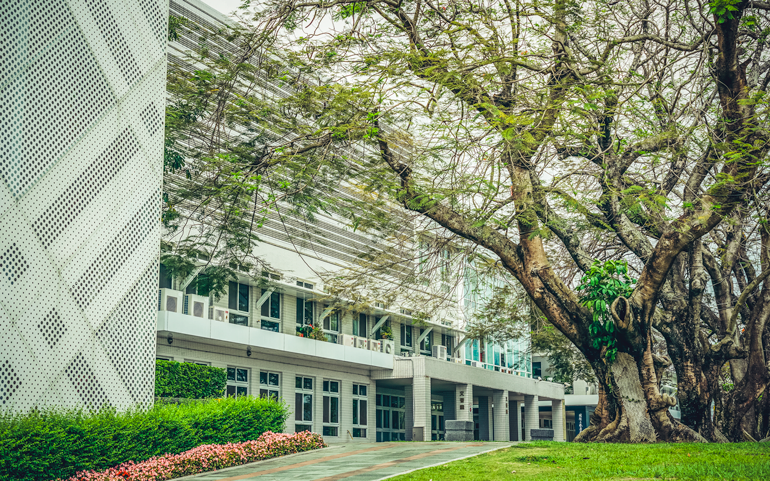
The campus of the institute is quite large, but your time is best spent in two buildings. In one, the Living Craft Hub is spread over five floors devoted to individual workshop-galleries. In the other, the Craft Hub is an open-plan display area. If you’ve young kids in tow, the fourth floor of the former – where you can find traditional games, puzzles, and other distractions – is a good place to spend a little time. But if you’re looking for some really classy souvenirs, head to the latter building. Both hubs are open Tuesday to Sunday, 9am to 5pm.

Among the art forms you’ll see represented in the institute are bamboo crafts, ceramics, lacquerware, lapidary arts, and metalwork. This part of Taiwan has an especially strong bamboo-working tradition; another town in Nantou County, Zhushan, literally “bamboo mountain,” is especially known for its bamboo art.
National Taiwan Craft Research and Development Institute
(台灣工藝文化園區 or 台灣工藝研究發展中心)
Add: No. 573, Zhongzheng Rd., Caotun Township, Nantou County
(南投縣草屯鎮中正路573號)
Tel: (049) 233-4141
Website: www.ntcri.gov.tw
Puli
Freeway 6, opened in 2009, has made the mountainous heart of Taiwan much more accessible to those living along the island’s western side. From the NTCRI it took us less than 45 minutes to get to Puli, a peaceful town in north-central Nantou. If you travel to famous Sun Moon Lake and approach that tourist hotspot from the north you will most likely pass the town on the way.
One of Puli’s most popular tourist attractions is the Goang Xing Paper Mill. At one time – thanks to the pristine water and abundant woodland resources of the mountain basin it is located in – Puli had around 50 papermaking mills. All but a handful have fallen by the wayside, unable to compete with more efficient factories elsewhere, but Goang Xing has survived by opening its doors to the public.
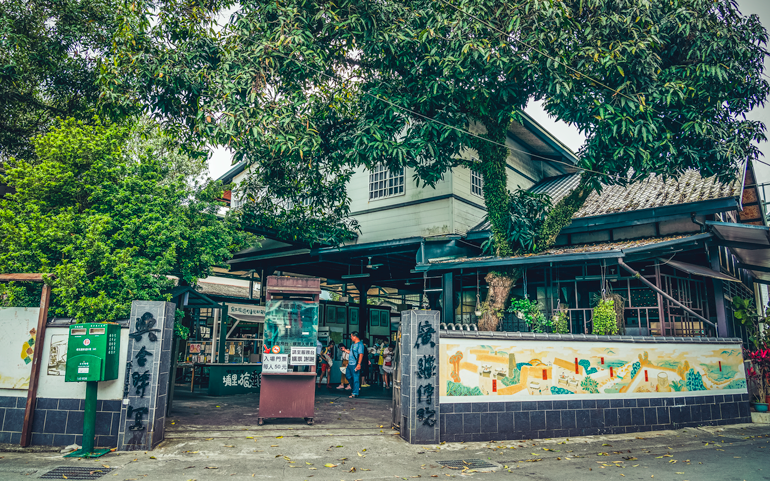
The mill’s website is in Chinese only, but if you search online you’ll find numerous English-language blog posts and news reports about this place. Tourists who roll up without an appointment can usually join a 20-minute guided tour in Mandarin within half an hour. If you want to try some of the DIY activities, or you wish to arrange an English-language tour, it’s best to get a Chinese-speaker to call (049) 291-3037 a few days in advance.

The tour includes a look around an exhibition room where the traditional paper-making process is explained, and where specialized tools are preserved. Among the latter are various brushes, including one made of horse-mane hair and another of pine needles.
Much more interesting is the process by which pulp is turned into sheets of paper. Visitors who sign up for a DIY session will do this for themselves by dipping a folding-frame contraption into a tub filled with pulpy water. As they lift it out, the water drains away. Pulp spreads evenly over a piece of bamboo matting that is then carefully separated. If there are no lumps or bubbles, the paper (which is about A2 size) is pressed to remove water, then brushed perfectly flat.

While the tourists are struggling to come up with a single decent sheet of paper, the mill’s professionals – typically four or five are working at any time – are producing rectangle after perfect rectangle of paper, each one as big as a dinner table. Watching them is mesmerizing, not least because the shade of cream or brown is different at each workstation, depending on the raw material used to make the pulp.

The sloshing sounds inside the mill made me think of a wave machine. Yet the liquid circulating isn’t simply pulp mixed with water. Our guide pointed out a tub of clear goo, and there was a connection to what we’d seen earlier in the day. This is Malabar Chestnut sap, a small quantity of which is added to the blend because it helps the fibers float to the surface.
We also saw two ladies busy spreading out just-pressed sheets on a heated metal surface, then brushing them perfectly flat using pine-needle brushes like the one we’d seen earlier. There are English-language signs and notices throughout the paper mill, and one here warned visitors not to touch the metal tabletop. It’s usually 90 degrees Celsius or even hotter, our guide said.

One popular DIY option is to turn the paper you’ve made into a fan, but if you’d rather buy some exquisite paper and take it home, perhaps to turn it into lampshades, head to the modern building next to the mill. Here you’ll find a shop filled with papers of every conceivable color and thickness. To create special textures and patterns, materials such as onion skin, loofah fiber, or dried leaf from guava trees have been added to short production runs.


In the same building there’s also a coffee shop where you can try some unusual snacks, including delicious chocolate-flavored cookies made of edible paper.

Goang Xing Paper Mill
(廣興紙寮)
Add: No. 310, Tieshan Rd., Tieshan Bor., Puli Twp., Nantou County
(南投縣埔里鎮鐵山里鐵山路310號)
Tel: (049) 291-3037
Website: www.taiwanpaper.net (Chinese)
A unique landmark stands on the eastern outskirts of Puli. As its name suggests, the Stele of Taiwan’s Geographical Center marks a point which is as near to the island’s east coast as it is to the western littoral, and as near to Taiwan’s northernmost tip as it is to the southernmost bit of dry land.
Continuing past the stele on Highway 14/14a, you will enter the high mountains and will come to tourist favorites such as the Qingjing Farm and the Hehuanshan mountain area and then, on the descent to the east coast, magnificent Taroko Gorge. Not as far, but equally scenic and attractive, is Sun Moon Lake, about half an hour by car south of Puli, along Provincial Highway 21.

In Nantou, you’re far from the sea, but Taiwan is your oyster!
Also read:
QINGJING FARM & MT. HEHUAN — High Mountains, Great Views
Foreigners in Taiwan:
99 Peaks Forest Trail 九九峰森林步道
Spectral Codex:
Caotun Cide Temple 草屯慈德宮

